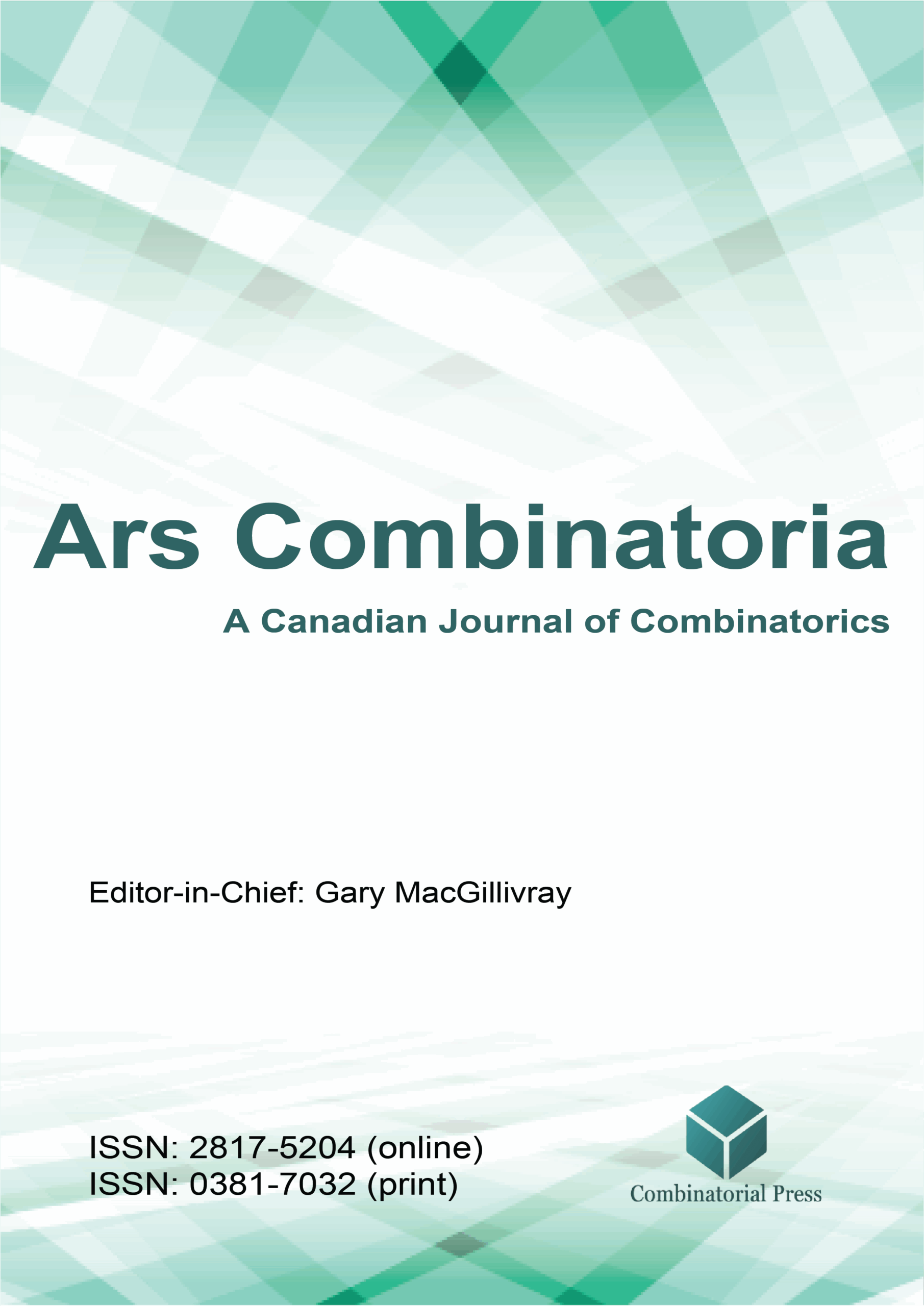
Ars Combinatoria
ISSN 0381-7032 (print), 2817-5204 (online)
Ars Combinatoria is the oldest Canadian Journal of Combinatorics, established in 1976. The journal is dedicated to advancing the field of combinatorial mathematics through the publication of high-quality research papers. From 2024 onward, it publishes four volumes per year in March, June, September and December. Ars Combinatoria has gained recognition and visibility in the academic community and is indexed in renowned databases such as MathSciNet, Zentralblatt, and Scopus. The Scope of the journal includes Graph theory, Design theory, Extremal combinatorics, Enumeration, Algebraic combinatorics, Combinatorial optimization, Ramsey theory, Automorphism groups, Coding theory, Finite geometries, Chemical graph theory but not limited.
Information Menu
- Research article
- Full Text
- Ars Combinatoria
- Volume 135
- Pages: 335-343
- Published: 31/10/2017
A vertex-colored path is vertex-rainbow if its internal vertices have distinct colors. For a connected graph
- Research article
- Full Text
- Ars Combinatoria
- Volume 135
- Pages: 323-334
- Published: 31/10/2017
For a simple graph
- Research article
- Full Text
- Ars Combinatoria
- Volume 135
- Pages: 311-322
- Published: 31/10/2017
We give a
- Research article
- Full Text
- Ars Combinatoria
- Volume 135
- Pages: 299-310
- Published: 31/10/2017
A pentangulation is a simple plane graph such that each face is bounded by a cycle of length
- Research article
- Full Text
- Ars Combinatoria
- Volume 135
- Pages: 283-298
- Published: 31/10/2017
The harmonic index
- Research article
- Full Text
- Ars Combinatoria
- Volume 135
- Pages: 265-282
- Published: 31/10/2017
Let
- Research article
- Full Text
- Ars Combinatoria
- Volume 135
- Pages: 257-263
- Published: 31/10/2017
Let
- Research article
- Full Text
- Ars Combinatoria
- Volume 135
- Pages: 249-256
- Published: 31/10/2017
It is claimed in [13] that the metric dimension of the Möbius ladder
- Research article
- Full Text
- Ars Combinatoria
- Volume 135
- Pages: 243-247
- Published: 31/10/2017
An edge-colored graph
- Research article
- Full Text
- Ars Combinatoria
- Volume 135
- Pages: 235-242
- Published: 31/10/2017
Let
Call for papers
Special issue: Proceedings of International Conference on Discrete Mathematics (ICDM 2025)





